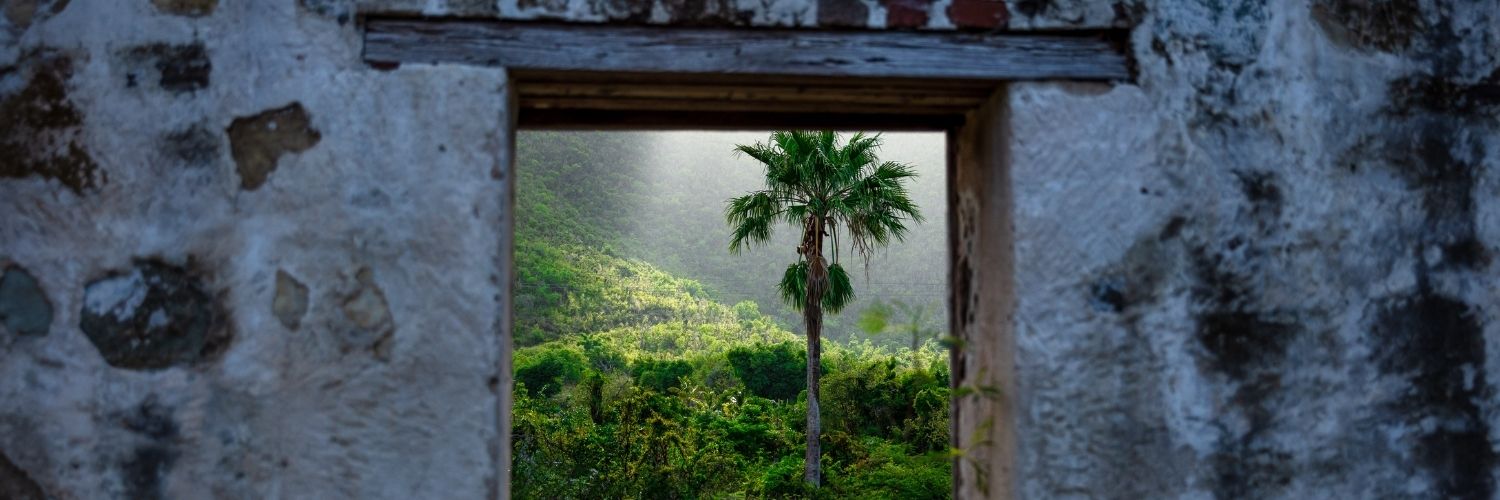

Like with many Caribbean islands, the first settlers arriving in St. Maarten are the Taino, an Arawak-speaking tribe coming from the Venezuelan mainland. Some remnants can still be found in the heritage museum or in the caves. The later Carib-speaking Kalinago tribe called the island Soualiga or island of salt. The Taino left the island well before Christopher Columbus first sights the island on November 11th 1493, naming St. Martin after the date’s patron saint St. Martin of Tours. Neither does Columbus make landfall, nor do the Spanish, at that time.
The first European settlement is a French one on the northern part of the island. The Dutch, attracted by the large salt pans as an important commodity to keep food fresh for the long atlantic journey, settle in the Little Bay area in 1631. In its 80 year battle of independence against the Spanish crown, Dutch St. Maarten finds itself under siege various times by its opponent.
In one of its battles, governor Peter Stuyvesant loses his leg due to an incoming cannonball during a siege of Fort Amsterdam. In the same year the treaty of Westphalia ends the 80 year insurrection and recognizes the Netherlands as a sovereign nation, the treaty of Concordia settles the border between the Dutch and French side of the island. European power conflicts however would result in ongoing invasions in the upcoming centuries; after which the border of the treaty of Concordia would be mostly reinstalled time and time again.
In the 17th and 18th century, the island counted 92 plantations. Most cultivated sugar, 29 of them focused on indigo, a few grapes, mangoes or limes, others bred cattle and horses for the export and basically all of them had areas with produce for own consumption. In comparison to other parts of the Caribbean region, St Maarten estates were mostly small. St Maarten / St Martin farms were more like a farm; some of them being owned by the same planters.
An example of a family owning multiple plantations was the van Romondt family. Regardless of size, as with the rest of the Caribbean, St Maarten / St Martin plantations were the scene of slavery. One story of the young female slave One Tete Lohkay has been a locally remembered tale illustrating the excesses of the timeframe. A monument in her memory was erected in the Belair / Little Bay area. In 2010, St Maarten was the scene of a scientifically important discovery, when the remains of three seventeenth century slaves were found during construction works in the Zoutsteeg in Philipsburg. Known as the “Zoutsteeg three”, various scientific studies were issued about these early Saint Martin slaves of the seventeenth century, as their DNA allowed for a better idea of the 17th century slave trade and the origins of its victims.
After the abolition of slavery (French side 1848 and Dutch side 1863), the hard work in the salt pans continues until the twentieth century. The Salt Pickers monument remembers of this work in the Great Salt Pond, whereas the Emancipation Monument remembers the abolition of slavery.
In 1954 St. Maarten becomes one of the six constituent islands of the Netherlands Antilles, an autonomous country in the Kingdom of the Netherlands. In 2010, the Netherlands Antilles as a country is dissolved and St Maarten comes an autonomous country within the Kingdom of the Netherlands. In the 1960’s, tourism starts to become an important source of income for the island, and “the Friendly Island” St. Maarten becomes one of the most sought after Caribbean destinations for the United States. Various celebrities decide to make it their (vacation) home. As of 1980, St. Maarten becomes home to one of the largest regattas in the world, the Heineken Regatta.
In 1995, St. Maarten is badly hit by hurricane Luis but an Emergency Recovery Fund leads to a successful recovery.
In 2006, French side St. Martin receives a special community status (COM) within the French republic. On the 10th of October 2010 (10-10-10), the Netherlands Antilles is dissolved as a country and St. Maarten becomes an autonomous country within the Kingdom of the Netherlands alongside the European Netherlands, Aruba and Curacao.
In 2017 , hurricane Irma led to devastation on the island, but in 2 years a resilient private sector had already built back two thirds of the pre-Irma hotel room capacity. Even more speedy was the recovery of its function of top three position of Caribbean cruise port, ranking top ten world wide in passenger visits again.
Back to Main Page of Visit St Maarten / St Martin
General Information About St Maarten / St Martin Page